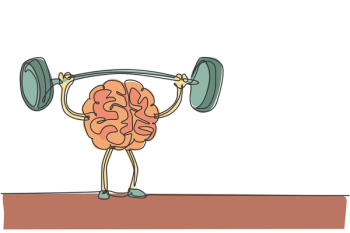
Fuel Efficiency
American consumers bought nearly $4 billion worth of sports nutrition products in 2005, according to Datamonitor (London). Many of those products were ready-to-drink (RTD) beverages. In fact, Beverage Marketing Corp. (New York City) recently noted that sports drinks grew at a compound annual growth rate (CAGR) of 17.8% between 2000 and 2005. If that CAGR sounds impressive, it is. By the end of the decade, Americans could be drinking up to 10 million gallons of Gatorade, Fuze, and other sports beverages per year to fuel their athletic pursuits.
“Sports drinks are still growing in the double-digit figures,” says Reto Rieder, national accounts manager at DSM Food Specialties USA (Eagleville, PA), which manufactures the whey protein hydrolysate PeptoPro. “They appeal to a wide audience who are looking for recovery and a quick burst of energy, as well as replacement of electrolytes.”
The market for sports drinks is expanding-and crowded. But that doesn’t mean manufacturers can’t do things to distinguish their products from the competition. Skillful marketing, ingredient selection, and packaging choices can help.
WHO’S BUYING
Sports beverages are a broad category, according to K. J. Burrington, dairy ingredient applications manager at the Wisconsin Center for Dairy Research at the University of Wisconsin–Madison. It includes drinks with and without isotonics, carbohydrates, vitamins and minerals, and protein. “They are all designed for different purposes, but usually hydration is the main reason,” Burrington says.
There are many different types of sports drink consumers, including children, adults, athletes, and nonathletes, which makes it important for manufacturers to understand their audience. “Consumers use sports drinks because they are perceived as healthier than soda and are an alternative that often offers additional nutrients, less sugar, and different flavors,” Burrington says. “Athletes use sports drinks, especially those containing whey proteins, because they are the primary consumer group that knows what whey proteins are and how they can enhance lean body mass, muscle recovery, and overall performance.”
Not surprisingly, different types of consumers react differently to label claims. Sharon Gerdes, technical support consultant for Dairy Management Inc. (Rosemont, IL), cites consumer research indicating that males are primarily interested in building muscle mass and prefer terms such as performance and whey protein. Females, on the other hand, tend to be interested in overall fitness and respond to the terms milk and dairy protein.
INGREDIENT SELECTION
Sports drinks can contain a dizzying array of ingredients. Although formulas vary, the most common denominators are carbohydrates, electrolytes, and protein. Many products also include B vitamins or other dietary supplement ingredients for extra energy.
According to DSM’s Rieder, no carbs usually means no energy. Beverage manufacturers must tread a fine line, however, between supplying enough carbohydrates and too many carbohydrates, which can add extra calories.
“I think the answer has to be low-carb instead of no-carb,” Rieder says. “Sports drinks need carbs to be effective.” He adds, however, that the products can still be effective if carb amounts are reduced to 5–15 g instead of higher amounts. Gatorade, for instance, maintains that a 6% carbohydrate concentration is optimal because it provides energy to muscles better than lower or higher concentrations.
Electrolytes are another important component of sports beverages. Sweat-induced exercise causes a loss of nutrients like potassium, sodium, and chloride that are essential for muscles to function properly. While plain water may be effective for most mild to moderate exercise, high-intensity workouts may call for electrolyte replacement.
Some sports drinks also contain protein to help muscles rebuild and repair tissue. “All sports drinks for endurance or recovery should contain protein in order to get a faster muscle recovery,” says Rieder, adding that the results of studies conducted at the Human Performance Laboratory at James Madison University (Harrisonburg, VA) found that athletes who drank a sports drink containing protein had more endurance and less muscle damage than athletes who drank a regular sports drink. “Leading sports scientists in the United States agree that protein should be added to sports drinks,” Rieder says. “The more difficult questions are, what form and what dosage level?”
Although soy protein such as Cargill’s (Minneapolis) patented Prolisse has been used successfully in sports beverages, whey protein is another popular choice because of its combination of physical properties and nutritional benefits.
“Many sports drinks fall into the low-pH, thirst-quenching category, which requires an almost water-like viscosity and mouthfeel,” Burrington says. “Whey protein ingredients, such as whey protein isolate and concentrate, are the only protein ingredients that will remain soluble throughout a typical one-year shelf life in pH ranges of 2.8–4.0, the range for many sports drinks. If a water-like appearance is important, a whey protein isolate will provide the best clarity of all the commercial whey ingredients, because it has the lowest level of fat.”
According to Rieder, whey protein hydrolysates such as PeptoPro offer advantages over some protein isolates that can be difficult to work with. “Hydrolysates are broken down into di- and tripeptides for fast absorption, are water soluble, and are low in bitterness,” Rieder explains.
While some sports drinks contain other supplement ingredients like creatine to increase muscle strength, herbs like ginseng or guarana for energy, or amino acids like taurine and carnitine, these products tend to be in the minority because the amounts necessary to produce an effect are difficult to put into a beverage. “There are various other well-known ingredients in sports drinks, but based on their dosage level, the effectiveness is doubtful,” Rieder says.
ERGONOMIC PACKAGING
Lastly, packaging is becoming increasingly important for sports nutrition products. Aside from making products stand out on the shelf with eye-catching graphics, good packaging can also attract consumers through ergonomic design. This is especially important for sports nutrition products, which often are used on the go or in the gym.
“The majority of sports drinks are packaged in plastic, with roughly less than 10% in metal or glass,” says Gerdes. “Although not technically sports drinks, gels are becoming increasingly popular and are now also being fortified with whey protein. These provide a convenient delivery system and seem to be very popular with runners and bicyclists.”
Gatorade, which designed a new easy-to-hold bottle dubbed the EDGE (the ergonomically designed Gatorade experience) in the late 1990s, considers the bottle to be “sports equipment” that helps consumers “rehydrate, replenish, and refuel without losing valuable seconds.” To create the bottle, designers spent two years measuring the human mouth and videotaping how athletes hold and drink beverages. While it’s easy to dismiss EDGE as marketing puff, the bottle increased sales between 10 to 25%, depending on the region, when it was introduced in January 2001, according to BusinessWeek.
THE REGULAR CONSUMER
Even though most research on sports drinks has been performed using elite athletes, that doesn’t mean that regular consumers can’t benefit from using them. The same principles that apply to long-distance runners and cyclists tend to apply to weekend warriors.
“Even the sports drinks that were designed for athletes work their way to the mainstream consumer,” says Burrington. “The benefits they have to offer can help both groups of consumers.”
“Most sports drinks are formulated with the athlete in mind, like Gatorade, but become mainstream beverages,” agrees Rieder. “Depending on the formula, everybody can reap the benefits of sports drinks in terms of endurance or recovery. Sometimes a simple formula like carbs, protein, and electrolytes is the most effective.”
Newsletter
From ingredient science to consumer trends, get the intel you need to stay competitive in the nutrition space—subscribe now to Nutritional Outlook.





